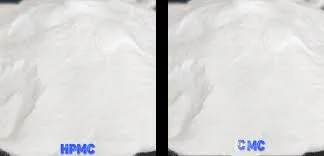
Nov . 05, 2024 23:17 Back to list
Methods for Dissolving Hydroxyethyl Cellulose in Various Solvents and Applications
A Comprehensive Guide to Dissolving Hydroxyethyl Cellulose
Hydroxyethyl cellulose (HEC) is a hydrophilic polymer derived from cellulose, widely used in various industries, including pharmaceuticals, cosmetics, and construction. Its thickening, gelling, and stabilizing properties make it an essential ingredient in various formulations. However, one of the critical steps in utilizing HEC is properly dissolving it, which ensures the effectiveness of the final product. This article provides a detailed guide on how to dissolve hydroxyethyl cellulose effectively.
Understanding Hydroxyethyl Cellulose
Before diving into the methods of dissolving HEC, it is crucial to understand its properties. HEC is a white, odorless powder that is readily soluble in water, especially at elevated temperatures. Its solubility is influenced by the concentration of the solution, the temperature, and the pH level. Typically, HEC dissolves easily in cold and warm water, but the dissolution process can be slow and may require specific techniques to achieve the desired viscosity and homogeneity.
Step-by-Step Dissolution Process
1. Gather Your Materials
To dissolve hydroxyethyl cellulose effectively, you will need the following materials
- Hydroxyethyl cellulose powder - Deionized or distilled water - A mixing device (e.g., a mechanical stirrer or a hand whisk) - Heat source (optional, depending on the desired temperature) - Graduated cylinder or suitable container for measuring
2. Measure the Hydroxyethyl Cellulose
Carefully measure the desired amount of HEC powder using a scale. The amount will depend on the specific application, with concentrations typically ranging from 0.5% to 5% by weight. Ensure accuracy in measurement to maintain the effectiveness of the final solution.
3. Prepare the Water
Use deionized or distilled water to avoid introducing impurities that may affect the HEC's properties. If you are aiming for a quicker dissolution process, consider heating the water to around 60°C (140°F). Water that is too hot may degrade the polymer, so maintaining an optimal temperature is crucial.
While stirring the water gently, gradually sprinkle the measured HEC powder into the container. Avoid dumping the powder in all at once, as this can lead to clumping and uneven dispersion. The key is to create a vortex in the water to help the powder disperse more efficiently.
how to dissolve hydroxyethyl cellulose

5. Stir Thoroughly
Continue stirring the mixture for about 10 to 30 minutes, depending on the concentration of HEC used. A mechanical stirrer is recommended for larger batches, as it helps achieve better uniformity. If using a hand whisk, ensure that you constantly move the whisk to break up any potential clumps.
6. Allow Time for Hydration
After stirring, allow the mixture to sit for a while (approximately 30 minutes to 1 hour). This waiting period is essential for the HEC to fully hydrate and swell, maximizing its thickening properties. During this time, check the viscosity and adjust the temperature if necessary to promote solubility.
7. Adjust pH (If Necessary)
HEC is stable over a wide range of pH levels; however, specific applications may require pH adjustments. Use suitable pH modifiers to achieve the desired pH level, and stir the solution again to ensure even distribution.
Troubleshooting Common Issues
Even with careful preparation, dissolution of HEC can sometimes present challenges
- Clumping If clumps form, increase the stirring speed and ensure the powder is added gradually. Introducing a small amount of water first (to make a paste) can also help before adding it to the bulk water.
- Incomplete Dissolution Ensure that the water temperature is sufficient and give extra mixing time if necessary.
- High Viscosity If the solution becomes excessively thick, you can dilute it with additional water to achieve the desired consistency.
Conclusion
Dissolving hydroxyethyl cellulose does not need to be a daunting task. By following the outlined steps and understanding the properties of HEC, one can achieve a smooth and effective solution suitable for various applications. Whether in cosmetics, pharmaceuticals, or other fields, mastering the dissolution of HEC is crucial for creating high-quality products. With practice and attention to detail, anyone can perfect the art of dissolving this versatile polymer.
-
Versatile Hpmc Uses in Different Industries
NewsJun.19,2025
-
Redispersible Powder's Role in Enhancing Durability of Construction Products
NewsJun.19,2025
-
Hydroxyethyl Cellulose Applications Driving Green Industrial Processes
NewsJun.19,2025
-
Exploring Different Redispersible Polymer Powder
NewsJun.19,2025
-
Choosing the Right Mortar Bonding Agent
NewsJun.19,2025
-
Applications and Significance of China Hpmc in Modern Industries
NewsJun.19,2025







